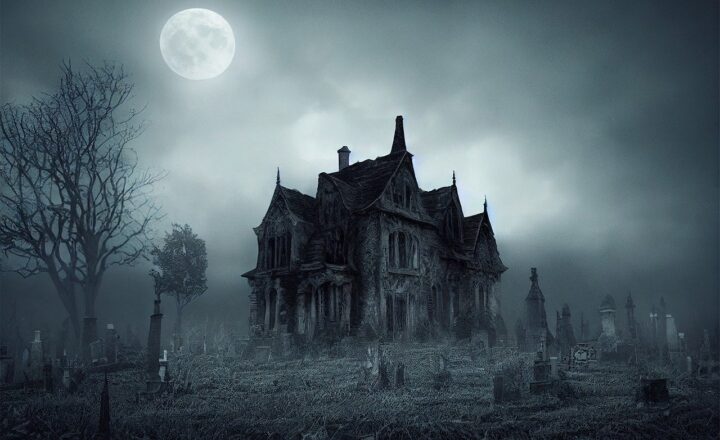The Most Terrifying Horror Movie Endings That Left Audiences Speechless
November 17, 2024

Horror movies have a remarkable ability to captivate and terrify us, often leaving viewers with racing hearts and lingering chills. But nothing quite compares to the gut-wrenching moments when a film reaches its climax, leaving audiences utterly speechless. In this article, we will explore some of the most terrifying horror movie endings that not only shocked viewers but also changed the landscape of horror cinema.
1. The Sixth Sense (1999)
M. Night Shyamalan’s “The Sixth Sense” is remembered not only for its brilliant storytelling but for one of the most iconic twists ever. The film follows child psychologist Dr. Malcolm Crowe, played by Bruce Willis, who is trying to help a young boy who claims to see dead people.
As the story unfolds, the tension builds until the shocking realization hits after the climax: Dr. Crowe himself is one of the ghosts. This jaw-dropping twist has captivated audiences worldwide and sparked countless discussions about the narrative and its layers. It’s a masterclass in how to craft an ending that transforms the entire film.
2. The Witch (2015)
Robert Eggers’ “The Witch” is an atmospheric slow-burn horror story that revolves around a Puritan family in 1630s New England. The ending reveals that the eldest daughter, Thomasin, has been deceived and is essentially manipulated by dark forces representing the wilderness beyond their comprehension.
In a chilling climax, she joins a coven of witches, laughing and embracing her newfound power. The blend of despair and liberation creates a haunting atmosphere that resonates long after the credits roll. Eggers transcends typical horror tropes, leaving viewers pondering the nature of faith, family, and fear.
Hereditary (2018)
Ari Aster’s “Hereditary” is a tour de force in psychological horror, delving into the darkness that resides within family dynamics. The film builds to a nail-biting climax where the family is torn apart by tragedy and manipulation.
The true horror unfolds in the final scenes where Peter is entangled in a series of horrifying events that lead him to encounter his deceased family members. The chilling visuals and unsettling revelations about ancestry and destiny culminate in a narrative that leaves viewers hanging on the edge of their seats, breathing only when the screen goes dark.
The Others (2001)
Starring Nicole Kidman, “The Others” is a ghostly tale that envelops audiences in its eerie atmosphere. Set in a haunted mansion, the story leads to a spine-tingling revelation—Grace, the protagonist, and her children are, in fact, dead.
The established tension throughout the film is punctuated by this chilling twist. The realization not only transforms the feelings of dread but also leads the audience to rethink everything they witnessed throughout the film. It’s a powerful ending defined by emotional resonance and shock, reminding viewers that the most profound horror can emerge from within.
Saw (2004)
James Wan’s “Saw” is notorious for its gruesome traps and twisted narrative, but the unforgettable ending helps to solidify its place in horror history. The film concludes with the protagonist, Adam, discovering that his tormentor, Jigsaw, has been lying just a few feet away, playing dead.
The chilling final images display Adam’s desperate attempts to escape, leading to a climactic ending where viewers realize the futility of his struggle. This final twist leaves audiences reeling and hungry for more.
Get Out (2017)
Jordan Peele’s “Get Out” has become a cultural phenomenon, and its ending leaves viewers stunned. The film critiques social messages about race while providing a visceral horror experience. The shocking climax reveals an unforeseen horror that centers on body-snatching and racist oppression.
The film’s final moments, where Chris fights for his life, raise broader questions about exploitation, rapidly shifting from pure horror to a commentary on societal structures, leaving a significant impact on its audience.
A Nightmare on Elm Street (1984)
Wes Craven’s “A Nightmare on Elm Street” redefined slasher films with its creation of Freddy Krueger, a monstrous figure who haunts dreams. The film concludes with a surreal and shocking ending where Nancy thinks she has defeated Krueger, only to discover that her friends are still victims.
The final scene where Nancy’s mother gets pulled into the bed, a horrifying twist that hints at Freddy’s power even in the waking world, leaves audiences gasping, questioning the very fabric of their reality.
Conclusion
The power of horror cinema lies not only in its ability to frighten but also to leave viewers in stunned silence as they reflect on the experience long after the credits roll. The endings of these films challenge our perceptions and perceptions of fear and serve as cautions against the very folklore and urban legends they explore. Horror film endings can impact audiences in profound ways, whether they terrify or provoke discussions about deeper societal issues. What binds them is their ability to shock and disturb, leaving a lasting impression.
Next time you watch a horror movie, keep an eye out for these terrifying twists, and make sure to catch your breath before the credits roll. You never know which shocking ending will leave you speechless next time.






